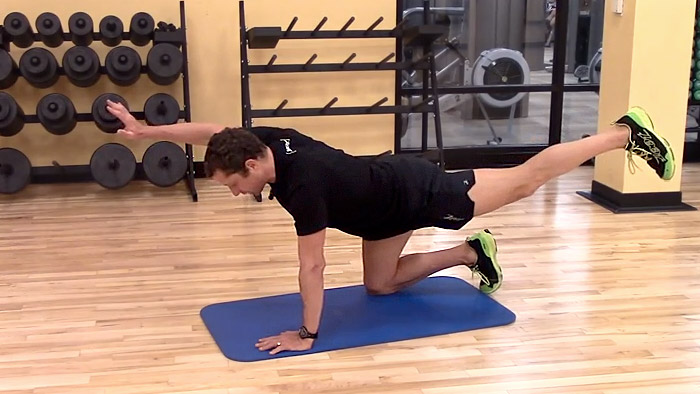You’ve heard talk about “core exercises” and “core strength” or some variation when it comes to strength training. Generally speaking, when discussing the core is considered the central region of the body, including the hips, and excluding the limbs. It’s important to note that when attempting to separate regions of the body you only getting part of the picture. Human movement is a global phenomenon, one where any movement of the part affects the whole. The core has been referred to as the crossroads of the body (particularly the hip) because all forces are transmitted through the core in one way or another. In the lab it’s been demonstrated that when you move your limbs there is activation of structures in the core before the limb itself moves.
Over the years several bio-mechanists have spent enormous time and energy exploring this region of our body and studying how it works. While I don’t want to dive into the specifics of physiology and anatomy, it is important to cover the key concepts.
It’s important to mention that everything ties together at our hips. Our spinal column attaches to the hips via the sacrum (5 fused sacral vertebrae). The spine is comprised of 24 individual vertebral bodies (7 cervical/neck, 12 thoracic/mid-back, and 5 lumbar/low back). The spinal column behaves similar to a suspension bridge by receiving and redirecting forces throughout the body. The ribs act like a cage protecting our heart and lungs, expanding and contracting with every breath we take. As we breathe our diaphragm pushes our visceral guts into our pelvic floor, causing the pelvic floor to push up against our abdominal wall thus creating a very fluid and dynamic system of interplay.
When we are talking about core strength or core stability we are addressing all of the many structures that attach to or envelop the hip, spine, abdominal and thoracic cavities. All of these fascial and muscular bodies work together to maintain proper alignment of the hip and spine. When properly maintained and conditioned they serve many purposes, chiefly among them:
- Postural Control: Core strength and training promotes optimal postural control enabling us to maintain structural integrity over a changing base of support. This allows us to move in and out of a variety of anatomical positions, thereby improving balance and our ability to accelerate and decelerate effectively.
- Spinal Health: When we are able to develop and maintain the proper balance between strength and mobility of the spine and hips, we are less likely to experience any of a variety of “back” problems many people experience each year (disc herniation, SI joint issues, or other structural abnormalities).
- Force Production Capabilities: A well-developed core enables us to generate more force more quickly. Activities performed with a weak or deconditioned core can be likened to shooting a cannon from a canoe where all the energy from the cannon is lost due to the unstable base of support the canoe (core) offers.
Below is a series of core and hip exercises that will reduce the risk of injury and greatly improve the quality and economy of movement through the entire body.
Break the exercises up into groups or “supersets” of 3-4 exercises, moving through them with little rest (no more than :20-:30 between each). Rest 1-2 minutes between the supersets that you establish.
- Introduction: a brief and general discussion of the core.
- Hip Extension and Abduction: perform 3-4 sets, each set will consist of 5-6 cycles of 5-8 repetitions per side (opposite leg and opposite hand). Achieve as much range as possible without forcing the range. Keep the arm straight and try to activate the glute without the hamstring.
- Side Lying Plank With Rotation: 3-4 sets of 8-12 reps, if you can safely/effectively add external load (dumbbell or cabled resistance) do so.
- Superman: 3-4 sets of 8-12 reps. Ease into the range of motion, never forcing too much. Keep the arms straight and try to activate the glute without the hamstring kicking on.
- Single Leg V Up: 4 sets of 12-18 per limb. This is a great exercise.
- Alligator Crawl: 3-4 sets of 8-12 repetitions per limb (each time you move forward). Don’t worry about how this exercise looks- this is one of the most functional ways to become stronger and more stable. Remember, this is how we start out in life- crawling.
- Plank and & Contralateral Limb Raise: 3 sets of 8-12 per. This can be a very demanding exercise, so you may need to start our segmenting it by raising just the arm or leg each repetition as opposed to the arm and limb simultaneously which is the end goal (the last part of the video)
- Low to High Wood Chop From a Half Kneel: 3-4 sets of 8-12 reps. You can use a band, med ball, or dumbbell for this as well. If using a cable or band make sure you achieve enough motion to touch the cable or band to the side of the trunk (without forcing the range).


